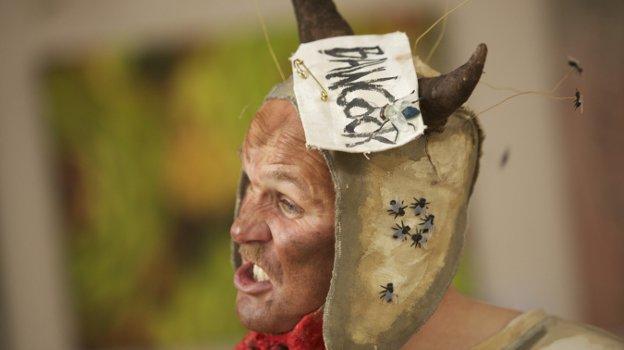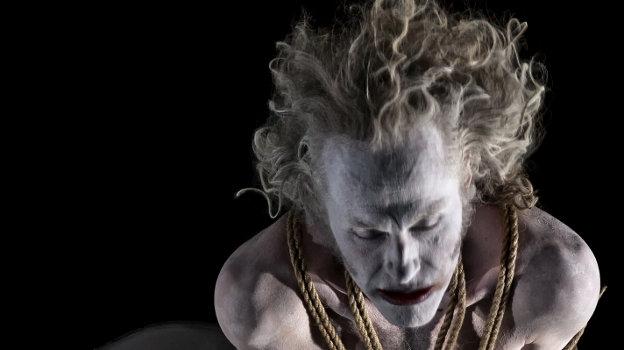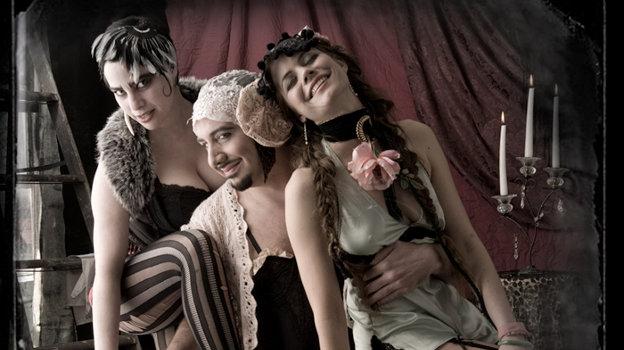It’s 2033 and this is the premise: What would happen if Suffolk got flooded, and you – a gathering of twelve random members of the public who, as ‘audience’ for this piece are gathered round a table with buttons to push and plastic policemen to position – you, yes you, had to make the key decisions that would save or sacrifice resources (human or otherwise). What would you do?
The answer, of course, is that you’d behave like the good, bleeding-heart liberal that you are. I mean, are any of us going to press the button that tells the authorities to refuse permission for the refugees in the boats offshore to land? Are we going to deny the squatters the right to occupy the empty (although furnished and only temporarily abandoned) houses? No, of course not. Even though our responses are anonymous, we all play the game the ‘right’ way and pick the answers we ‘should’. And we make those decisions because it isn’t real, it’s a simulation – a very flawed one that doesn’t really encourage any deep thought on the subject to hand. After all, they aren’t real people or real houses, and there is no real incentive to suspend disbelief in this 2033 world in which everyone dresses and talks like us, and in which the camcom video conferencing is below the level of technology normal for 2011. I don’t for a minute, no matter how hard I try, believe that it could possibly be 2033, or that this scenario could really be happening ‘out there’, and this scepticism isn’t helped by the two actors (one with us and one in the other container) who are lacking any real credibility as our guides in this future world.
For me, the gaming format of the show, with its instant decision-making at the touch of a button, is an interesting gimmick, but is nothing more than that. It encourages a trite response, not a real reflection on issues at hand. The strongest part of the piece is a short section at the end when the ‘conference facilitator’ leaves us in the ‘Emergency cell’ to make decisions alone. We are encouraged to confer with our fellow audience members cum participants, take on different roles, and come up with some solutions. But because, until this point, we have been in splendid isolation pushing buttons and rearranging the plastic figurines, vehicles and road signs in what is a kind of alternative game of Risk, we have no relationship, so we are only just touching on how to work together when our time is up. Perhaps it is all one big commentary on how decision-makers make decisions blithely or can’t make decisions because they have no way of interacting in the given time – but that doesn’t make for an enjoyable or thought-provoking theatrical experience.
I’m also aghast at the amount of kit used in this show about environmental concerns: two massive shipping containers, an illuminated table, the gaming set-up, various video monitors, etc, etc. Presenting the ethical and environmental dilemmas that needed solving as written questions on pieces of card, discussed by a group of people sat on chairs in an empty room, would have made a lot more sense on all sorts of levels. Let’s start to live with the low-tech, low-energy solutions that will, in fact, make life better for all!
A worthy piece with, no doubt, its heart in the right place – but from my viewpoint it gets things very wrong in so many ways. The one positive thought that I did have is that this could work as a ‘theatre in education’ piece. Perhaps if it was used to introduce schoolchildren (as opposed to seasoned, weary experimental theatre-goers!) to some of the dilemmas potentially facing our country in the coming decades, and to examine the notion of ethical decision-making versus political decision-making, then that could be something of value.
I also enjoyed the installation in the neighbouring ‘Strategy cell’ (more interesting than the performance itself, in my book) where there are opportunities to write proposals of improvements you feel could be made in the here and now, or to endorse, contradict or add to other people’s proposals on such issues as public transport, water usage, and the pros and cons of nuclear fuel.










